- Home
- Walter Scott
Letters on Demonology and Witchcraft Page 13
Letters on Demonology and Witchcraft Read online
Page 13
Although they thus disagreed on the principal object of Thome Reid's visits, Bessie Dunlop affirmed he continued to come to her frequently, and assist her with his counsel; and that if any one consulted her about the ailments of human beings or of cattle, or the recovery of things lost and stolen, she was, by the advice of Thome Reid, always able to answer the querists. She was also taught by her (literally ghostly) adviser how to watch the operation of the ointments he gave her, and to presage from them the recovery or death of the patient. She said Thome gave her herbs with his own hand, with which she cured John Jack's bairn and Wilson's of the Townhead. She also was helpful to a waiting-woman of the young Lady Stanlie, daughter of the Lady Johnstone, whose disease, according to the opinion of the infallible Thome Reid, was "a cauld blood that came about her heart," and frequently caused her to swoon away. For this Thome mixed a remedy as generous as the balm of Gilead itself. It was composed of the most potent ale, concocted with spices and a little white sugar, to be drunk every morning before taking food. For these prescriptions Bessie Dunlop's fee was a peck of meal and some cheese. The young woman recovered. But the poor old Lady Kilbowie could get no help for her leg, which had been crooked for years; for Thome Reid said the marrow of the limb was perished and the blood benumbed, so that she would never recover, and if she sought further assistance, it would be the worse for her. These opinions indicate common sense and prudence at least, whether we consider them as originating with the umquhile Thome Reid, or with the culprit whom he patronized. The judgments given in the case of stolen goods were also well chosen; for though they seldom led to recovering the property, they generally alleged such satisfactory reasons for its not being found as effectually to cover the credit of the prophetess. Thus Hugh Scott's cloak could not be returned, because the thieves had gained time to make it into a kirtle. James Jamieson and James Baird would, by her advice, have recovered their plough-irons, which had been stolen, had it not been the will of fate that William Dougal, sheriff's officer, one of the parties searching for them, should accept a bribe of three pounds not to find them. In short, although she lost a lace which Thome Reid gave her out of his own hand, which, tied round women in childbirth, had the power of helping their delivery, Bessy Dunlop's profession of a wise woman seems to have flourished indifferently well till it drew the evil eye of the law upon her.
More minutely pressed upon the subject of her familiar, she said she had never known him while among the living, but was aware that the person so calling himself was one who had, in his lifetime, actually been known in middle earth as Thome Reid, officer to the Laird of Blair, and who died at Pinkie. Of this she was made certain, because he sent her on errands to his son, who had succeeded in his office, and to others his relatives, whom he named, and commanded them to amend certain trespasses which he had done while alive, furnishing her with sure tokens by which they should know that it was he who had sent her. One of these errands was somewhat remarkable. She was to remind a neighbour of some particular which she was to recall to his memory by the token that Thome Reid and he had set out together to go to the battle which took place on the Black Saturday; that the person to whom the message was sent was inclined rather to move in a different direction, but that Thome Reid heartened him to pursue his journey, and brought him to the Kirk of Dalry, where he bought a parcel of figs, and made a present of them to his companion, tying them in his handkerchief; after which they kept company till they came to the field upon the fatal Black Saturday, as the battle of Pinkie was long called.
Of Thome's other habits, she said that he always behaved with the strictest propriety, only that he pressed her to go to Elfland with him, and took hold of her apron as if to pull her along. Again, she said she had seen him in public places, both in the churchyard at Dalry and on the street of Edinburgh, where he walked about among other people, and handled goods that were exposed to sale, without attracting any notice. She herself did not then speak to him, for it was his command that, upon such occasions, she should never address him unless he spoke first to her. In his theological opinions, Mr. Reid appeared to lean to the Church of Rome, which, indeed, was most indulgent to the fairy folk. He said that the new law, i.e., the Reformation, was not good, and that the old faith should return again, but not exactly as it had been before. Being questioned why this visionary sage attached himself to her more than to others, the accused person replied, that when she was confined in childbirth of one of her boys, a stout woman came into her hut, and sat down on a bench by her bed, like a mere earthly gossip; that she demanded a drink, and was accommodated accordingly; and thereafter told the invalid that the child should die, but that her husband, who was then ailing, should recover. This visit seems to have been previous to her meeting Thome Reid near Monkcastle garden, for that worthy explained to her that her stout visitant was Queen of Fairies, and that he had since attended her by the express command of that lady, his queen and mistress. This reminds us of the extreme doting attachment which the Queen of the Fairies is represented to have taken for Dapper in "The Alchemist." Thome Reid attended her, it would seem, on being summoned thrice, and appeared to her very often within four years. He often requested her to go with him on his return to Fairyland, and when she refused, he shook his head, and said she would repent it.
If the delicacy of the reader's imagination be a little hurt at imagining the elegant Titania in the disguise of a stout woman, a heavy burden for a clumsy bench, drinking what Christopher Sly would have called very sufficient small-beer with a peasant's wife, the following description of the fairy host may come more near the idea he has formed of that invisible company:—Bessie Dunlop declared that as she went to tether her nag by the side of Restalrig Loch (Lochend, near the eastern port of Edinburgh), she heard a tremendous sound of a body of riders rushing past her with such a noise as if heaven and earth would come together; that the sound swept past her and seemed to rush into the lake with a hideous rumbling noise. All this while she saw nothing; but Thome Reid showed her that the noise was occasioned by the wights, who were performing one of their cavalcades upon earth.
The intervention of Thome Reid as a partner in her trade of petty sorcery did not avail poor Bessie Dunlop, although his affection to her was apparently entirely platonic—the greatest familiarity on which he ventured was taking hold of her gown as he pressed her to go with him to Elfland. Neither did it avail her that the petty sorcery which she practised was directed to venial or even beneficial purposes. The sad words on the margin of the record, "Convict and burnt," sufficiently express the tragic conclusion of a curious tale.
Alison Pearson, in Byrehill, was, 28th May, 1588, tried for invocation of the spirits of the devil, specially in the vision of one Mr. William Sympson, her cousin and her mother's brother's son, who she affirmed was a great scholar and doctor of medicine, dealing with charms and abusing the ignorant people. Against this poor woman her own confession, as in the case of Bessie Dunlop, was the principal evidence.
As Bessie Dunlop had Thome Reid, Alison Pearson had also a familiar in the court of Elfland. This was her relative, William Sympson aforesaid, born in Stirling, whose father was king's smith in that town. William had been taken away, she said, by a man of Egypt (a Gipsy), who carried him to Egypt along with him; that he remained there twelve years, and that his father died in the meantime for opening a priest's book and looking upon it. She declared that she had renewed her acquaintance with her kinsman so soon as he returned. She further confessed that one day as she passed through Grange Muir she lay down in a fit of sickness, and that a green man came to her, and said if she would be faithful he might do her good. In reply she charged him, in the name of God and by the law he lived upon, if he came for her soul's good to tell his errand. On this the green man departed. But he afterwards appeared to her with many men and women with him, and against her will she was obliged to pass with them farther than she could tell, with piping, mirth, and good cheer; also that she accompanied them into Lothian, where she saw puncheo
ns of wine with tasses or drinking-cups. She declared that when she told of these things she was sorely tormented, and received a blow that took away the power of her left side, and left on it an ugly mark which had no feeling. She also confessed that she had seen before sunrise the good neighbours make their salves with pans and fires. Sometimes, she said, they came in such fearful forms as frightened her very much. At other times they spoke her fair, and promised her that she should never want if faithful, but if she told of them and their doings, they threatened to martyr her. She also boasted of her favour with the Queen of Elfland and the good friends she had at that court, notwithstanding that she was sometimes in disgrace there, and had not seen the queen for seven years. She said William Sympson is with the fairies, and that he lets her know when they are coming; and that he taught her what remedies to use, and how to apply them. She declared that when a whirlwind blew the fairies were commonly there, and that her cousin Sympson confessed that every year the tithe of them were taken away to hell. The celebrated Patrick Adamson, an excellent divine and accomplished scholar, created by James VI. Archbishop of St. Andrews, swallowed the prescriptions of this poor hypochondriac with good faith and will, eating a stewed fowl, and drinking out at two draughts a quart of claret, medicated with the drugs she recommended. According to the belief of the time, this Alison Pearson transferred the bishop's indisposition from himself to a white palfrey, which died in consequence. There is a very severe libel on him for this and other things unbecoming his order, with which he was charged, and from which we learn that Lethington and Buccleuch were seen by Dame Pearson in the Fairyland.[34] This poor woman's kinsman, Sympson, did not give better shelter to her than Thome Reid had done to her predecessor. The margin of the court-book again bears the melancholy and brief record, "Convicta et combusta."
The two poor women last mentioned are the more to be pitied as, whether enthusiasts or impostors, they practised their supposed art exclusively for the advantage of mankind. The following extraordinary detail involves persons of far higher quality, and who sought to familiars for more baneful purposes.
Katherine Munro, Lady Fowlis, by birth Katherine Ross of Balnagowan, of high rank, both by her own family and that of her husband, who was the fifteenth Baron of Fowlis, and chief of the warlike clan of Munro, had a stepmother's quarrel with Robert Munro, eldest son of her husband, which she gratified by forming a scheme for compassing his death by unlawful arts. Her proposed advantage in this was, that the widow of Robert, when he was thus removed, should marry with her brother, George Ross of Balnagowan; and for this purpose, her sister-in-law, the present Lady Balnagowan, was also to be removed. Lady Fowlis, if the indictment had a syllable of truth, carried on her practices with the least possible disguise. She assembled persons of the lowest order, stamped with an infamous celebrity as witches; and, besides making pictures or models in clay, by which they hoped to bewitch Robert Munro and Lady Balnagowan, they brewed, upon one occasion, poison so strong that a page tasting of it immediately took sickness. Another earthen jar (Scotticè pig) of the same deleterious liquor was prepared by the Lady Fowlis, and sent with her own nurse for the purpose of administering it to Robert Munro. The messenger having stumbled in the dark, broke the jar, and a rank grass grew on the spot where it fell, which sheep and cattle abhorred to touch; but the nurse, having less sense than the brute beasts, and tasting of the liquor which had been spilled, presently died. What is more to our present purpose, Lady Fowlis made use of the artillery of Elfland in order to destroy her stepson and sister-in-law. Laskie Loncart, one of the assistant hags, produced two of what the common people call elf-arrow heads, being, in fact, the points of flint used for arming the ends of arrow-shafts in the most ancient times, but accounted by the superstitious the weapons by which the fairies were wont to destroy both man and beast. The pictures of the intended victims were then set up at the north end of the apartment, and Christian Ross Malcolmson, an assistant hag, shot two shafts at the image of Lady Balnagowan, and three against the picture of Robert Munro, by which shots they were broken, and Lady Fowlis commanded new figures to be modelled. Many similar acts of witchcraft and of preparing poisons were alleged against Lady Fowlis.
Her son-in-law, Hector Munro, one of his stepmother's prosecutors, was, for reasons of his own, active in a similar conspiracy against the life of his own brother. The rites that he practised were of an uncouth, barbarous, and unusual nature. Hector, being taken ill, consulted on his case some of the witches or soothsayers, to whom this family appears to have been partial. The answer was unanimous that he must die unless the principal man of his blood should suffer death in his stead. It was agreed that the vicarious substitute for Hector must mean George Munro, brother to him by the half-blood (the son of the Katharine Lady Fowlis before commemorated). Hector sent at least seven messengers for this young man, refusing to receive any of his other friends till he saw the substitute whom he destined to take his place in the grave. When George at length arrived, Hector, by advice of a notorious witch, called Marion MacIngarach, and of his own foster-mother, Christian Neil Dalyell, received him with peculiar coldness and restraint. He did not speak for the space of an hour, till his brother broke silence and asked, "How he did?" Hector replied, "That he was the better George had come to visit him," and relapsed into silence, which seemed singular when compared with the anxiety he had displayed to see his brother; but it was, it seems, a necessary part of the spell. After midnight the sorceress Marion MacIngarach, the chief priestess or Nicneven of the company, went forth with her accomplices, carrying spades with them. They then proceeded to dig a grave not far from the seaside, upon a piece of land which formed the boundary betwixt two proprietors. The grave was made as nearly as possible to the size of their patient Hector Munro, the earth dug out of the grave being laid aside for the time. After ascertaining that the operation of the charm on George Munro, the destined victim, should be suspended for a time, to avoid suspicion, the conspirators proceeded to work their spell in a singular, impressive, and, I believe, unique manner. The time being January, 1588, the patient, Hector Munro, was borne forth in a pair of blankets, accompanied with all who were entrusted with the secret, who were warned to be strictly silent till the chief sorceress should have received her information from the angel whom they served. Hector Munro was carried to his grave and laid therein, the earth being filled in on him, and the grave secured with stakes as at a real funeral. Marion MacIngarach, the Hecate of the night, then sat down by the grave, while Christian Neil Dalyell, the foster-mother, ran the breadth of about nine ridges distant, leading a boy in her hand, and, coming again to the grave where Hector Munro was interred alive, demanded of the witch which victim she would choose, who replied that she chose Hector to live and George to die in his stead. This form of incantation was thrice repeated ere Mr. Hector was removed from his chilling bed in a January grave and carried home, all remaining mute as before. The consequence of a process which seems ill-adapted to produce the former effect was that Hector Munro recovered, and after the intervention of twelve months George Munro, his brother, died. Hector took the principal witch into high favour, made her keeper of his sheep, and evaded, it is said, to present her to trial when charged at Aberdeen to produce her. Though one or two inferior persons suffered death on account of the sorceries practised in the house of Fowlis, the Lady Katharine and her stepson Hector had both the unusual good fortune to be found not guilty. Mr. Pitcairn remarks that the juries, being composed of subordinate persons not suitable to the rank or family of the person tried, has all the appearance of having been packed on purpose for acquittal. It might also, in some interval of good sense, creep into the heads of Hector Munro's assize that the enchantment being performed in January, 1588, and the deceased being only taken ill of his fatal disease in April, 1590, the distance between the events might seem too great to admit the former being regarded as the cause of the latter.[35]
Another instance of the skill of a sorcerer being traced to the instructions o
f the elves is found in the confession of John Stewart, called a vagabond, but professing skill in palmistry and jugglery, and accused of having assisted Margaret Barclay, or Dein, to sink or cast away a vessel belonging to her own good brother. It being demanded of him by what means he professed himself to have knowledge of things to come, the said John confessed that the space of twenty-six years ago, he being travelling on All-Hallow Even night, between the towns of Monygoif (so spelled) and Clary, in Galway, he met with the King of the Fairies and his company, and that the King of the Fairies gave him a stroke with a white rod over the forehead, which took from him the power of speech and the use of one eye, which he wanted for the space of three years. He declared that the use of speech and eyesight was restored to him by the King of Fairies and his company, on an Hallowe'en night, at the town of Dublin, in Ireland, and that since that time he had joined these people every Saturday at seven o'clock, and remained with them all the night; also, that they met every Hallow-tide, sometimes on Lanark Hill (Tintock, perhaps), sometimes on Kilmaurs Hill, and that he was then taught by them. He pointed out the spot of his forehead on which, he said, the King of the Fairies struck him with a white rod, whereupon the prisoner, being blindfolded, they pricked the spot with a large pin, whereof he expressed no sense or feeling. He made the usual declaration, that he had seen many persons at the Court of Fairy, whose names he rehearsed particularly, and declared that all such persons as are taken away by sudden death go with the King of Elfland. With this man's evidence we have at present no more to do, though we may revert to the execrable proceedings which then took place against this miserable juggler and the poor women who were accused of the same crime. At present it is quoted as another instance of a fortune-teller referring to Elfland as the source of his knowledge.

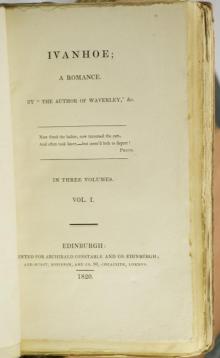 Ivanhoe: A Romance
Ivanhoe: A Romance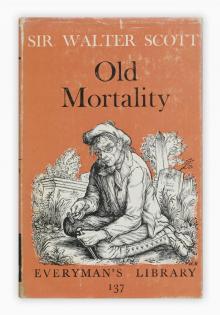 Old Mortality, Complete
Old Mortality, Complete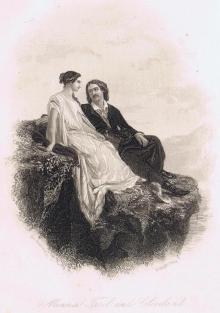 The Pirate
The Pirate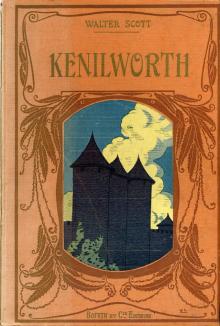 Kenilworth
Kenilworth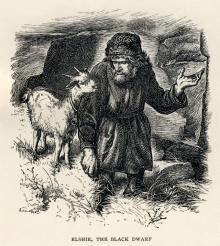 The Black Dwarf
The Black Dwarf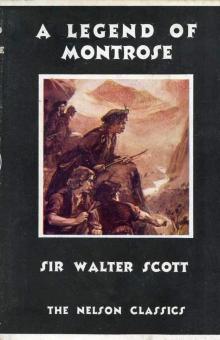 A Legend of Montrose
A Legend of Montrose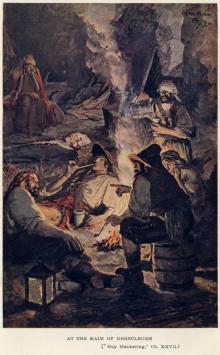 The Monastery
The Monastery The Bride of Lammermoor
The Bride of Lammermoor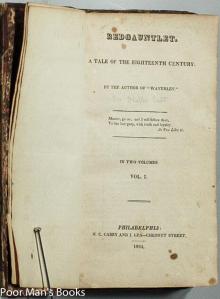 Redgauntlet: A Tale Of The Eighteenth Century
Redgauntlet: A Tale Of The Eighteenth Century St. Ronan's Well
St. Ronan's Well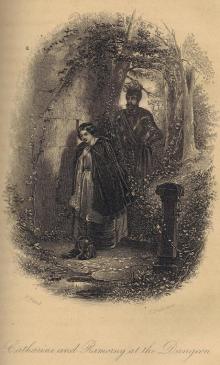 The Fair Maid of Perth; Or, St. Valentine's Day
The Fair Maid of Perth; Or, St. Valentine's Day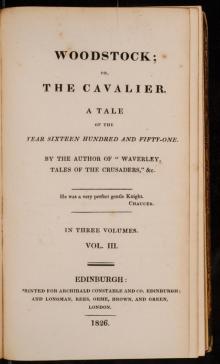 Woodstock; or, the Cavalier
Woodstock; or, the Cavalier_preview.jpg) Anne of Geierstein; Or, The Maiden of the Mist. Volume 1 (of 2)
Anne of Geierstein; Or, The Maiden of the Mist. Volume 1 (of 2)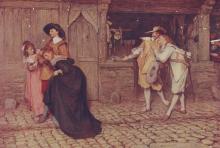 Peveril of the Peak
Peveril of the Peak Waverley; Or, 'Tis Sixty Years Since
Waverley; Or, 'Tis Sixty Years Since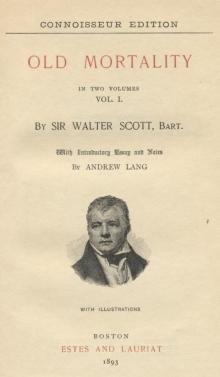 Old Mortality, Volume 1.
Old Mortality, Volume 1. Waverley Novels — Volume 12
Waverley Novels — Volume 12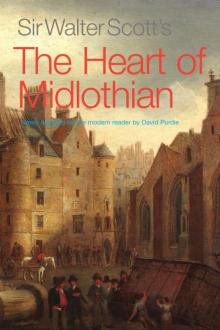 The Heart of Mid-Lothian, Complete
The Heart of Mid-Lothian, Complete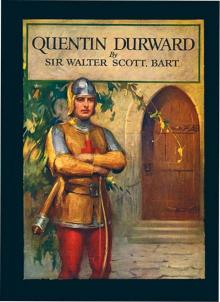 Quentin Durward
Quentin Durward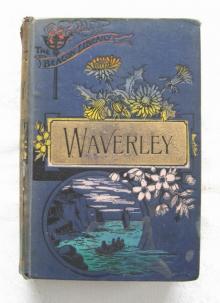 Waverley; Or 'Tis Sixty Years Since — Complete
Waverley; Or 'Tis Sixty Years Since — Complete Guy Mannering; or, The Astrologer — Complete
Guy Mannering; or, The Astrologer — Complete Rob Roy — Complete
Rob Roy — Complete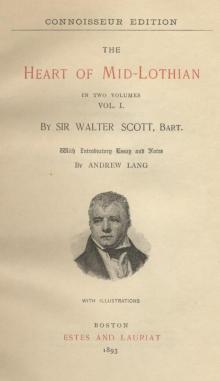 The Heart of Mid-Lothian, Volume 2
The Heart of Mid-Lothian, Volume 2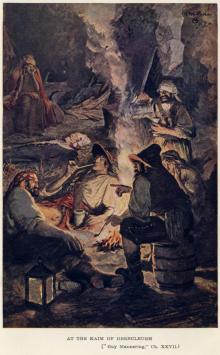 Guy Mannering, Or, the Astrologer — Complete
Guy Mannering, Or, the Astrologer — Complete_preview.jpg) Anne of Geierstein; Or, The Maiden of the Mist. Volume 2 (of 2)
Anne of Geierstein; Or, The Maiden of the Mist. Volume 2 (of 2)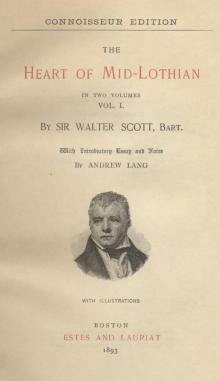 The Heart of Mid-Lothian, Volume 1
The Heart of Mid-Lothian, Volume 1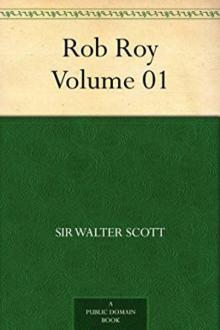 Rob Roy — Volume 01
Rob Roy — Volume 01 Waverley; Or, 'Tis Sixty Years Since — Volume 2
Waverley; Or, 'Tis Sixty Years Since — Volume 2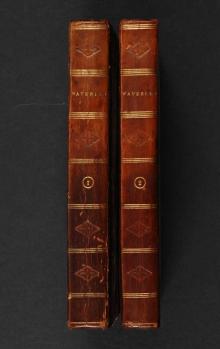 Waverley; Or, 'Tis Sixty Years Since — Volume 1
Waverley; Or, 'Tis Sixty Years Since — Volume 1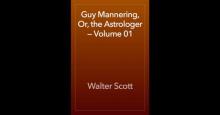 Guy Mannering, Or, the Astrologer — Volume 01
Guy Mannering, Or, the Astrologer — Volume 01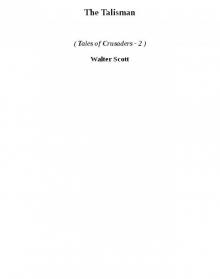 The Talisman toc-2
The Talisman toc-2 Rob Roy
Rob Roy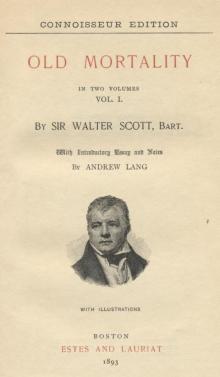 Old Mortality, Volume 2.
Old Mortality, Volume 2. The Betrothed
The Betrothed Waverley
Waverley The Surgeon's Daughter
The Surgeon's Daughter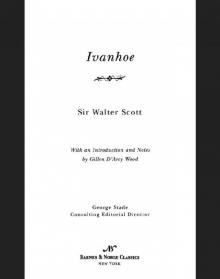 Ivanhoe (Barnes & Noble Classics Series)
Ivanhoe (Barnes & Noble Classics Series) The Antiquary
The Antiquary Letters on Demonology and Witchcraft
Letters on Demonology and Witchcraft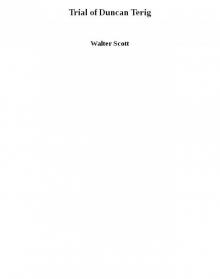 Trial of Duncan Terig
Trial of Duncan Terig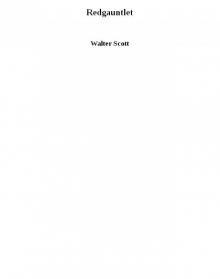 Redgauntlet
Redgauntlet My Aunt Margaret's Mirror
My Aunt Margaret's Mirror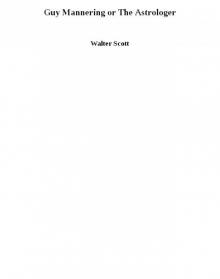 Guy Mannering or The Astrologer
Guy Mannering or The Astrologer Marmion
Marmion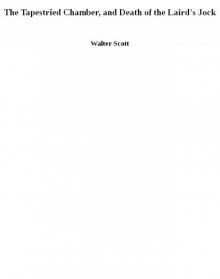 The Tapestried Chamber, and Death of the Laird's Jock
The Tapestried Chamber, and Death of the Laird's Jock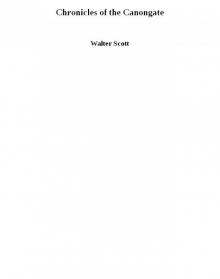 Chronicles of the Canongate
Chronicles of the Canongate The Fair Maid of Perth or St. Valentine's Day
The Fair Maid of Perth or St. Valentine's Day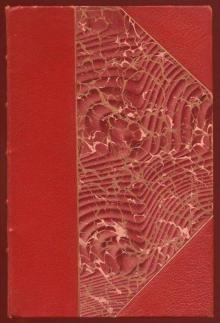 The Heart of Mid-Lothian
The Heart of Mid-Lothian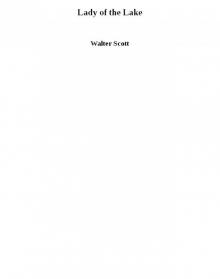 Lady of the Lake
Lady of the Lake